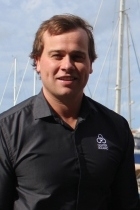Crew Build a Yacht – Project Assemble

Working within the yachting industry is unique in every sense of the word. In particular, it’s common for superyacht crew to move between vessels as they advance through the ranks or seek greener pastures on new programs. While this isn’t always positive, it does expose crew to a range of systems and equipment in their every duties. This fuelled an idea for the team at Seahub in the shape of ‘Project Assemble’, a yacht designed entirely by crew.
If crew were to design a yacht, what brands of equipment would they want and what features would they request?
This was the question put out to the yachting community via social media in October and the responses were varied and outstanding. With the bulk of responses coming from captains and engineers, here are the findings and names of the ‘winners’ of Project Assemble.
Above all, emphasis was placed on design and the accessibility of equipment which speaks to the naval architects and ship builders out there. Much of the dialogue between engineers was around the age-old battle of designing yachts around guest experience and space maximisation and the design of ‘maintenance friendly’ engine rooms and working areas. The most successful yacht builders including Lürssen, Westport and Heesen appear to strike the best balance here, resulting in more desirable employment and greater longevity of crew on vessels from these manufacturers.
When it comes to equipment, while many factors affect their operation, Project Assemble revealed some scathing assessments of certain components. Many boiled down to incorrect application, poor installation or lack of routine maintenance.

In the engine room, there were some notable standouts. CAT engines were a crowd favourite in the category of main engines. This was largely due to their reliability and vast support network of authorised service agents. Northern Light generators won a tight one as the most commonly requested generator and ZF took honours for the most preferred marine transmission.
Certain successful manufacturers in the engine room have also become known for the service they provide. Alfa Laval (fuel purification) and Hi Fog (fire suppression) are two brands that have become industry norms for many and can be celebrated as go-to products for many crew and ship builders.
And never let a bit of banter get in the way of a serious project! Many crew backed the idea of coffee machines in control rooms and we’re not going to argue with that.

The bridge was an area of great debate, with a range of views on whether or not to equip Project Assemble with the absolute latest technology. It’s generally understood that with IT there are phases of development which are released to market gradually, with the aim of better understanding their effectiveness in production environments. In layman’s terms, a software company like Apple might release 10 new features on a device and, if the feedback indicates certain features are poorly received, these are likely to be dropped from later releases.
The second officer of an 88m world cruising motor yacht expressed a preference for displays with ridged water-proof buttons opposed to purely digital touch pads for exterior displays. Many in the wheelhouse also reported that support is a critical requirement when weighing up which products to use.
The preferred navigation equipment, by far, was Nobeltec TimeZero and the people’s choice for radar was Furuno - another industry favourite. Critical to the smooth operation of any vessel is the use of marine radios and ICOM won a tight one as the preferred radio with most support coming from captains and deck crew of all ranks. 
More generally, crew also stated a preference for universally used manufacturers when stocking up on inventory in preparation for a crossing or new season. For example, if an entire vessel is equipped with Grundfos pumps, the reordering and storage of spares becomes a more streamlined process in many ways.
Quality crew beds, an abundance of storage options on all levels and appropriate work spaces were also mentioned by crew across the board, from engineers to chief stews and deckhands.
For future builds, many crew suggested ways to reuse the by-products currently produced by a fully functioning yacht. Heat recovery systems, air conditioning, chilled waste water and wet exhaust discharge were highlighted as areas with potential.
Project Assemble gave us invaluable insight into the opinions and views of crew tapping into decades of knowledge and experience. Engaging in this way with build engineers, captains and skilled, long term yacht crew could play a positive role in creating the next generation of yachts – coffee machines included.


Post your comment
You cannot post comments until you have logged in.
Login to post a commentComments
No one has commented on this page yet.
RSS feed for comments on this page | RSS feed for all comments